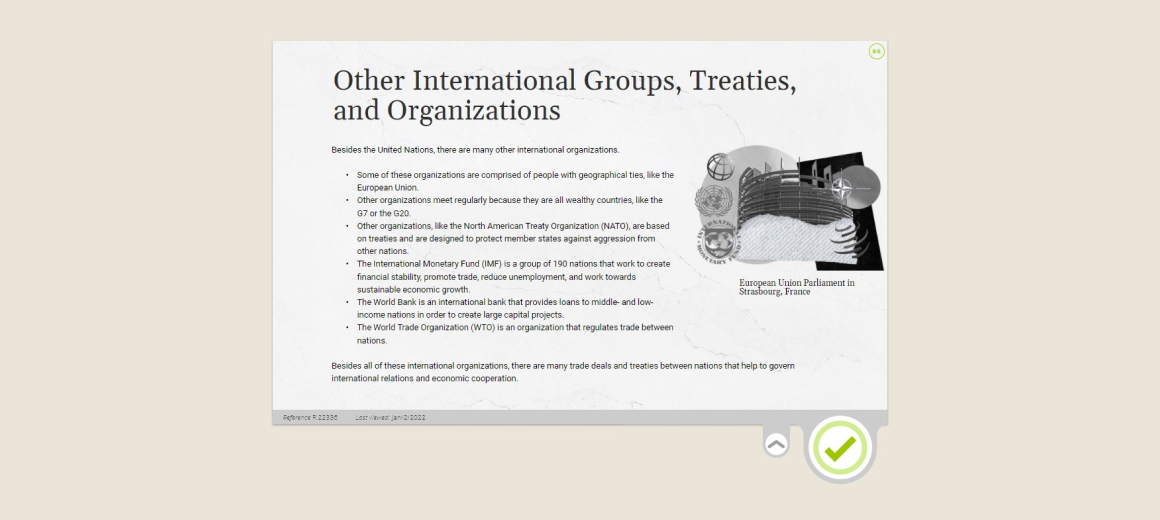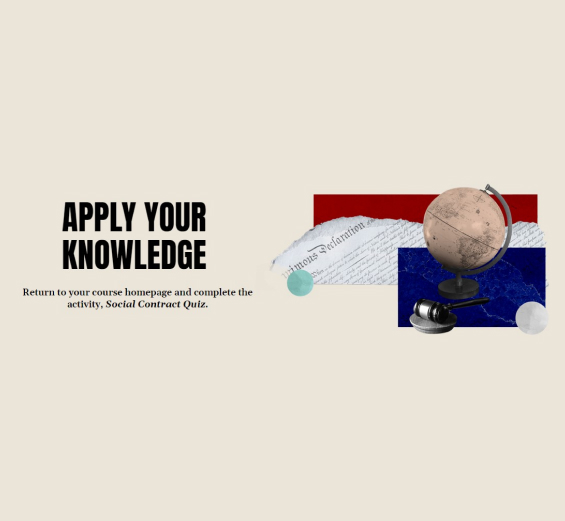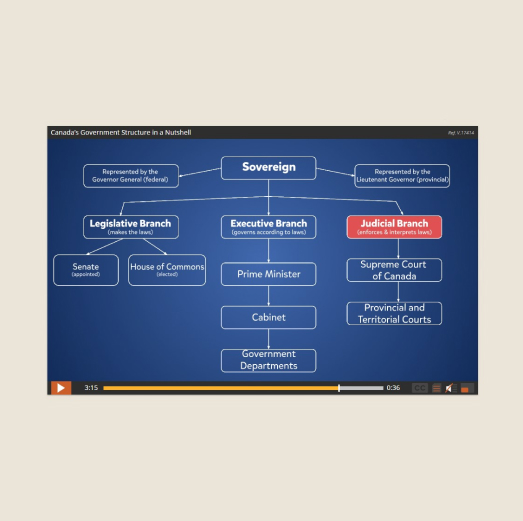Political Studies 12
How can political power be used in ways that make society a better place to live? The vision for this course is that students would gain an appreciation for various political ideologies, an understanding of how political institutions work, and confidence that they can knowledgeably use their own political power to make a positive difference in their communities.
In a politically polarized world, this course aims to have students learn how to have political conversations in meaningful and respectful ways with one another despite differences. Hopefully, students will gain respect for perspectives that are different from their own, and learn to turn down the temperature on political conversations. Forums and other assignments are designed to be opportunities to practice more collaborative online political dialogue.
With the encouragement and opportunities provided by this course, students will be able to make a difference in their own city, region, or country, realizing that their voice is a meaningful one in the marketplace of ideas. Opportunities to “get involved” may spur them to continue to remain involved throughout their lives, not just through voting, but through many types of peaceful civic activism.
In a politically polarized world, this course aims to have students learn how to have political conversations in meaningful and respectful ways with one another despite differences. Hopefully, students will gain respect for perspectives that are different from their own, and learn to turn down the temperature on political conversations. Forums and other assignments are designed to be opportunities to practice more collaborative online political dialogue.
With the encouragement and opportunities provided by this course, students will be able to make a difference in their own city, region, or country, realizing that their voice is a meaningful one in the marketplace of ideas. Opportunities to “get involved” may spur them to continue to remain involved throughout their lives, not just through voting, but through many types of peaceful civic activism.
Table of Contents
*Each lesson is designed to take 60 – 90 minutes to complete with the exception of major projects and assignments.
Lesson 1: Course Introduction
Lesson 2: Envisioning a Better Society
Lesson 3: The Social Contract
Lesson 4: The Role of Government in a Civil Society
Lesson 5: The Role of Government: Establishing and Preserving Rights
Lesson 6: The Role of Government: Establishing the Rule of Law
Lesson 7: The Role of Government: Safety for Citizens
Lesson 8: The Role of Government: Economic Health
Lesson 9: Taxes
Lesson 10: Society and Government Unit Assignment
Lesson 2: Envisioning a Better Society
Lesson 3: The Social Contract
Lesson 4: The Role of Government in a Civil Society
Lesson 5: The Role of Government: Establishing and Preserving Rights
Lesson 6: The Role of Government: Establishing the Rule of Law
Lesson 7: The Role of Government: Safety for Citizens
Lesson 8: The Role of Government: Economic Health
Lesson 9: Taxes
Lesson 10: Society and Government Unit Assignment
Lesson 1: Introduction to the Political Spectrum
Lesson 2: Forms of Government
Lesson 3: Conservatism
Lesson 4: Liberalism and Progressivism
Lesson 5: Libertarianism and Anarchism
Lesson 6: Democratic Socialism
Lesson 7: Fascism
Lesson 8: Communism and Socialism
Lesson 9: Consensus Government
Lesson 10: Unit Review
Lesson 2: Forms of Government
Lesson 3: Conservatism
Lesson 4: Liberalism and Progressivism
Lesson 5: Libertarianism and Anarchism
Lesson 6: Democratic Socialism
Lesson 7: Fascism
Lesson 8: Communism and Socialism
Lesson 9: Consensus Government
Lesson 10: Unit Review
Lesson 1: Partisanship, Polarization, and Political Conversations
Lesson 2: Free Speech
Lesson 3: The Role of Media in a Free Society
Lesson 4: Social Media and Politics
Lesson 5: Conspiracies and Conspiracy Theories
Lesson 6: Analyzing Conspiracy Theories
Lesson 7: Political Conversations
Lesson 2: Free Speech
Lesson 3: The Role of Media in a Free Society
Lesson 4: Social Media and Politics
Lesson 5: Conspiracies and Conspiracy Theories
Lesson 6: Analyzing Conspiracy Theories
Lesson 7: Political Conversations
Lesson 1: Calling an Election
Lesson 2: Campaigns and Political Advertisement
Lesson 3: Debates and Campaign Speeches
Lesson 4: Opinion Polls and Public Opinion
Lesson 5: Election Systems
Lesson 6: Canada’s Political Parties
Lesson 7: Canada’s Government Structure
Lesson 8: Power Sharing
Lesson 9: Political Power for Minority Voices
Lesson 10: Indigenous Self-Government in Canada
Lesson 2: Campaigns and Political Advertisement
Lesson 3: Debates and Campaign Speeches
Lesson 4: Opinion Polls and Public Opinion
Lesson 5: Election Systems
Lesson 6: Canada’s Political Parties
Lesson 7: Canada’s Government Structure
Lesson 8: Power Sharing
Lesson 9: Political Power for Minority Voices
Lesson 10: Indigenous Self-Government in Canada
Lesson 1: Local Government: Role and Issues
Lesson 2: Provincial Governments: Role and Issues
Lesson 3: Federal Government: Role and Issues
Lesson 4: Public Policy and its Impact on Nations’ Citizens
Lesson 5: Internationalism and the United Nations
Lesson 6: International Groups, Treaties, and Organizations
Lesson 7: Globalism, Cooperation, and Conflict
Lesson 8: Get Involved
Lesson 2: Provincial Governments: Role and Issues
Lesson 3: Federal Government: Role and Issues
Lesson 4: Public Policy and its Impact on Nations’ Citizens
Lesson 5: Internationalism and the United Nations
Lesson 6: International Groups, Treaties, and Organizations
Lesson 7: Globalism, Cooperation, and Conflict
Lesson 8: Get Involved
Experience a lesson as your students would
Course Features
- Interactive video games to review vocabulary
- Frequent quizzes to solidify and ensure understanding of key concepts
- Practical “off-screen” activities designed to get students involved in their community and conversing with people of various opinions
- Conspiracy Theory Analysis tool designed specifically for this course to empower students to discern fact from fiction in conspiracy theories

















